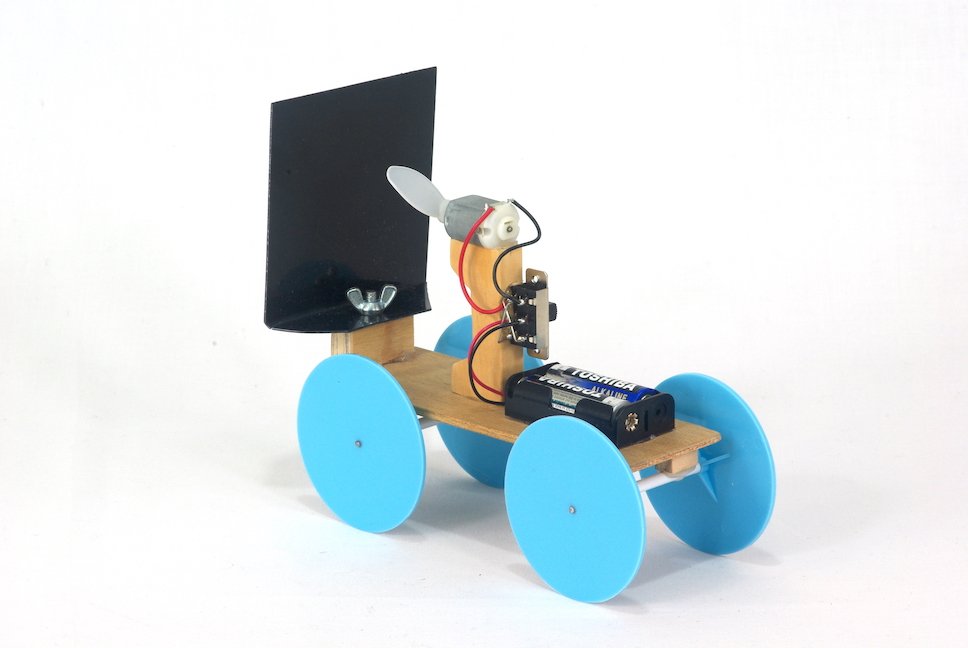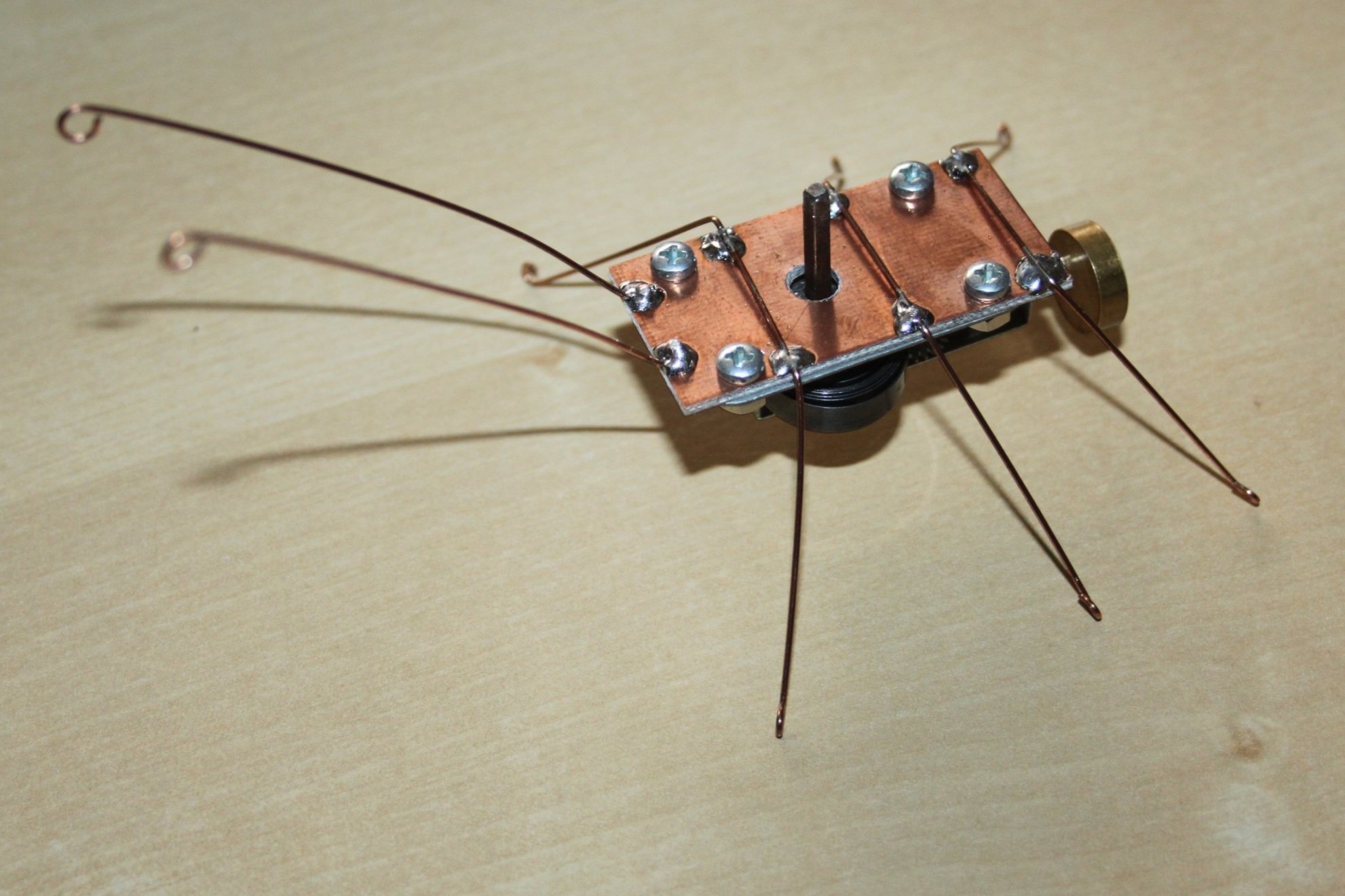Click here for a Decision table to determine the kits best suited to your students' needs.
For more detailed information about each kit please refer to the individual kit's teaching unit Overview. If the unit is not downloadable please contact us and we will email you a copy.
Balance Plane (5-8 hours)
Code: BALAN solder version
Click here for teaching unit overview
Code: BALAN-NS no solder version
Click here for teaching unit overview
In this project a beam is used, with an electric motor and a propeller on one end and a battery holder on the other end. It is placed in a balanced state, on a vertical upright. This beam is designed to be rotated about its central point, in a horizontal plane, by the motor driven propeller.
Bubble Blower - No Solder - G4 (8-10 hours)
Code: BUBBLE-NS-G4
Click here for teaching unit overview
This device is designed to automatically blow bubbles! One motor, driving through a gearbox, constantly rotates 6 wire hoops, which continuously dip into a vessel holding the bubble mixture. The propeller (driven by a second electric motor) blows air into the hoops, producing a constant stream of bubbles.
PLEASE NOTE:
The original version of the Bubble Blower kit has been phased out and has been replaced by the v2 model containing an unassembled gearbox.
Bubble Blower – No Solder – will continue with the GFOURSD gearbox and motor replacing the original – only while stocks last of that Gearbox assembly (please contact us for stock quantities of the No Solder version before placing your order).
Bubble Blower v2
PLEASE NOTE:
- The original version of the Bubble Blower kit has been phased out and has been replaced by the v2 model containing an unassembled gearbox and is now located in the Intermediate kits section.
- Bubble Blower – No Solder – will continue with the GFOURSD gearbox and motor replacing the original – only while stocks last of that Gearbox assembly (please contact us for stock quantities of the No Solder version before placing your order).
Blue Fin Fan Cart (2-4 hours)
Code: BLUEFIN
Click here for teaching unit overview
The BLUE FIN FAN CART is a simple four wheeled, propeller driven device with a sail that can be adjusted or removed to test the theory of Newton’s 3rd Law of Motion. The propeller is driven by a small battery powered electric motor.
Includes lesson plan.
Captive Aeroplane (5-7 hours)
Code: CAPTIVE solder version
Click here for teaching unit Overview
Code: CAPTIVE-NS no solder version
Click here for teaching unit Overview
A small aeroplane is built from plastic or wood. It is driven by a propeller, which is powered by a small electric motor. The plane is suspended from an overhead point and flies in a circle. The basic CAPTIVE AEROPLANE is a very simple model to construct. This has a lot of scope for combining two different areas of study: technology and art (with a bit of woodwork thrown in!). The aeroplane is a simple model to make. However the components and ideas can be used to make other devices.
For example: • A WITCH ON A BROOMSTICK for halloween • A FLYING PIG (see if pigs can really fly?) – SEE THE PROJECT SHEETS PAGE ON OUR WEBSITE.
NOTE: Bamboo for captive plane fuselage and HIPS for wings / tail section now available (see Platforms & PVC page).
Captive Aeroplane with the Lot (5-7 hours) **new**
Code: CAPTIVE-WTL
Click here for teaching unit Overview
A small aeroplane is built from plastic or wood. It is driven by a propeller, which is powered by a small electric motor. The plane is suspended from an overhead point and flies in a circle. The basic CAPTIVE AEROPLANE is a very simple model to construct. This has a lot of scope for combining two different areas of study: technology and art (with a bit of woodwork thrown in!). The aeroplane is a simple model to make.
This variation of the no solder version above includes bamboo for the fuselage and HIPS (High Impact Polystyrene) sheet for the wings and tail section.
Car Belt Driven (6-8 hours)
Code: BELTCAR solder version
Click here for teaching unit Overview
Code: BELTCAR-NS no solder version
Click here for teaching unit Overview
This is a four-wheeled vehicle at its simplest. Motive power is provided to the rear axle by an electric motor-driven belt (a rubber “O” ring). A number of these cars can be raced, and have the potential to be added to, to drive faster! Also, car bodies can be built, and decorated in the Art class!
Jumping Bug
Code: JUMPBUG
Click here or teaching unit Overview
Make a fun novelty JUMPING BUG using a simple clockwork mechanism with an eccentric cam. This project also allows you to practice your soldering skills
Low Rider (2-4 hours)
Code: LO-RIDER
Click here for teaching unit Overview
This is a basic four wheeled vehicle, with both front and rear wheels on fixed axles. This vehicle:
Is capable of forward and reverse motion (direction of travel being controlled by a two way switch)
Pre-assembled gearbox with a choice of two gearbox ratios (at the construction stage).
Morse Code Unit - Breadboard Project (3-5 hours) **new**
Code: MORSEBRBD
Click here for teaching unit Overview
The BREADBOARD MORSE CODE UNIT is a simple project that can be constructed to allow you to practice morse code and see and hear the results using a LED and buzzer.
PLEASE NOTE: This kit is only available in limited quantities (maximum 5) for teachers to trial, home education or private usage. MORSEBRBD10 is a class pack with larger quantities.
This kit may involve some soldering; however, this is optional and not a requirement.
Morse Code Unit - Breadboard Project 10 Pack (3-5 hours)
Code: MORSEBRBD10
Click here for teaching unit Overview
The BREADBOARD MORSE CODE UNIT is a simple project that can be constructed to allow you to practice morse code and see and hear the results using a LED and buzzer.
NOTE: This kit provides the components required to build 10 stand-alone Morse Codes Units.
This kit may involve some soldering; however, this is optional and not a requirement.
Propelled Car (5-7 hours)
Code: PROPC solder version
Click here for teaching unit Overview
Code: PROPC-NS no solder version
Click here for teaching unit Overview
This vehicle is a simple four wheeled, propeller driven device. The propeller is driven by a small battery powered electric motor.
Soccer Bot (7 hours)
Code: SOCCER solder version
Click here for teaching unit Overview
Code: SOCCER-NS no solder version
Click here for teaching unit overview
The SOCCER ‘BOT is a simple electro-mechanical device that responds to a wired hand held controller, which is used to steer the device, using two push button switches to move forwards, left or right. SOCCER ‘BOT can be used to play a game of soccer between two or more participants. The front of the SOCCER ‘BOT has a “scoop” (a crescent shaped cut-out), that enables a tennis ball to be “captured” and pushed towards the goal. The scoop is shallow enough to allow a competitor to knock the tennis ball out of control, then capture the ball and try to score.
Solar Car - Basic (10-15 hours)
Code: SOLARB solder version
Click here for teaching unit Overview
Code: SOLARB-NS no solder version
Click here for teaching unit Overview
The SOLAR CAR - BASIC is a simple four-wheeled vehicle, driven by an electric motor, powered by a solar panel. Power to the wheels is transferred from the motor by gears. This car will run on a smooth level surface from 25% sunlight upwards. The solar panel consists of one large section producing 2.0 Volts and 0.87 Amps of electricity, under a 100% sunlight condition. The illustration shows the prototype vehicle. The concept has limited scope for variation. Students should design a vehicle to suit their own needs.
Solar Car (v2) (10-15 hours)
Code: SOLARv2
Click here for teaching unit Overview
The SOLAR CAR (version 2) is a basic four-wheeled vehicle, driven by an electric motor, powered by a purpose-designed solar panel. Power to the wheels is transferred from the motor by gears. This car will run on a smooth level surface from 25% sunlight upwards. The Solar panel consists of two sections, each of 1.5 Volts and 0.2 Amps, which can be connected in series or parallel. The illustration shows the prototype vehicle. The concept has scope for variation. Students should design a vehicle to suit their own needs.
Steady Hand Game (2-4 hours)
Code: STEADYSEC
Click here for teaching unit Overview
The STEADY HAND GAME is a simple game for students to make and assemble that illustrates simple electric circuits.
The aim of the game is for the student to avoid touching the wire with the hand held loop. Touching the wire with the loop will result in the buzzer sounding and the LED lighting up. The game makes use of the fact that electricity will only flow around a complete circuit - it will stop flowing the moment the circuit is broken. The idea is to try not to complete a circuit, so that a buzzer does not make a sound or an LED does not light up.
Steady Hand Game - No Solder (2-4 hours)
Code: STEADY-NS
Click here Teaching unit Overview
The STEADY HAND GAME is a simple game for students to make and assemble that illustrates simple electric circuits.
The aim of the game is for the student to avoid touching the wire with the handheld loop. Touching the wire with the loop will result in the globe lighting up.
Whirly (5 - 7 hours)
Code: WHIRL solder version
Click here for teaching unit overview
Code: WHIRL-NS no solder version
Click here for teaching unit overview
This model consists of a single rotating beam that has an electric motor with a propeller, mounted at one end. A battery holder is on the other end of the beam and counterbalances them. The beam is mounted on an “axle” (shaft) at the beams’ centre of gravity. When the WHIRLY is switched on, the motor spins the propeller, thus rotating the beam around its axle.
Do you need something more challenging for your students? Click here to view our intermediate kits


















